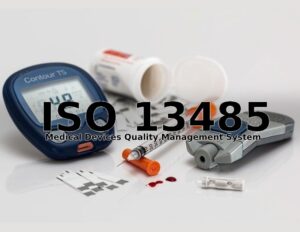 For the purpose of this writing, we will refer to the group of global health agencies – such as the US FDA, Health Canada, the European Medicines Agency, UK’s Medicines and Healthcare Products Regulatory Agency, and other health-related governing bodies – as “Health Agencies”.
For the purpose of this writing, we will refer to the group of global health agencies – such as the US FDA, Health Canada, the European Medicines Agency, UK’s Medicines and Healthcare Products Regulatory Agency, and other health-related governing bodies – as “Health Agencies”.
Health Agencies each have legal definitions and classifications for what is a ‘medical device’ and ‘manufacturer’ of a medical device. However, they universally recognize 13485 as a Quality Management Standard for medical devices. In many cases 13485 serves as a pre-requisite for licenses and permits issued by Health Agencies.
The most common question we at T-Next receive regarding ISO 13485 is “Does my organizations NEED to be ISO 13485 certified?”. The answer to this question depends on a few things:
- Whether your product a ‘medical device’
- Whether your organization is considered the ‘manufacturer’ of a medical device (it’s not always clear!)
- And, if you are not the manufacturer, whether your supply chain requires you to be ISO 13485 certified
It should be recognized that each of these definitions have specific exceptions. To convey the important points, specific exceptions are not addressed here.
What is considered a Medical Device?
If a device is used for a medical purpose, it is considered a medical device. Most of the world’s health agencies have adopted a three-tier device classification system based on the risk associated with using the device, including IVD devices (In Vitro Diagnosic) and GPR’s (General Purpose Reagents), with some differences among Health Agencies.:
- Class I Devices are Low Risk Devices. Examples generally include Tongue Depressors, Ear Swabs, Bandages, Hygienic Masks, and Hospital Beds
- Class II Devices are Medium Risk. Examples generally include Catheters, Contact Lenses, Lancing Devices, and Pregnancy Test Kits. These devices often require additional regulatory filings, such as the US FDA’s 510K, or Health Canada’s MDL/MDEL model, and generally require special controls.
- Class III Devices are High Risk Devices. Examples generally include Pacemakers, Breast Implants, and Defibrillators. These devices often require additional regulatory filings and pre-market approvals.
Who is considered a Manufacturer?
An organization is considered a ‘manufacturer’ if it is responsible for the design, manufacture, packaging and labelling of a medical device before it is placed on the market under its own name.
A company may also be considered a manufacturer if it buys and rebrands medical devices as their own.
Does My Organizations NEED To Be Certified for ISO 13485?
For Manufacturers of Medical Devices:
13485 certification is effectively a regulatory necessity for manufacturers of medical devices in most of the world’s leading Health Agency jurisdictions.
Some Health Agencies will accept “other” Quality Management Standards. However, ISO 13485 is the only globally recognized standard, and the preferred standard for companies wishing to operate globally. It’s much more cost-effective to adopt the global standard than it is to deal with added burden of proof, audit complexity, and scrutiny each time a regulatory body or supply chain requires a manufacturer to demonstrate an acceptable QMS for medical devices.
For manufacturers of medical devices, 13485 is a basic pre-requisite for many the following basic registrations which the organization will need to manufacture and sell your products:
Registration as a Medical Device Manufacturer:
- With the Health Agency of the jurisdiction where manufacture takes place
- With the Health Agency of the jurisdiction where the product is to be sold
Registration of the Medical Device:
- With the Health Agency where manufacture takes place
- With the Health Agency jurisdiction where the product is to be sold
For Distributors of Medical Devices:
For most of the world’s leading Health Agency jurisdictions, 13485 certification is NOT a direct regulatory requirement for most distributors of medical devices.
Indirectly, however, many RFP’s (Request for Proposal), manufacturers and end-buyers of medical devices require distributors (or the entire supply chain) to be 13485 certified.
Benefits of ISO 13485
- Simplified (and faster) global recognition of a company’s registration and products
- Lower cost of implementing and maintaining compliance and registration of a company and its products
- Simplified (and faster) access to global markets
- Simplified (and faster) ability to participate in global supply chains
- Overall lower cost of compliance
- Lower operating costs
- Improved product and safety
- Increased customer satisfaction
- Improved decision making through involvement of top management
- Increased employee involvement
About T-Next
T-Next is an ISO and Quality Management Standards Consultancy. Our sole focus is understanding the global landscape of regulatory standards to go accelerate our clients’ access to global markets across all industries, including medical devices.
Our team conducts its activities through a combination of on-site and remote/virtual activities with your staff, as is most effective for our clients.
We recognize that there is no such thing as a one-size-fits-all QMS implementation. We fully customize each client’s ISO 13485 Quality Management System to meet our clients’ specific needs throughout our 6-step approach to guiding them all the way through to certification:
- Gap Analysis:
We conduct a Gap Analysis to evaluate your current processes in comparison with the ISO 13485 standard to identify where changes are required to meet certification standards.
- Awareness Training:
Based on the Gap Analysis, Awareness Training will be provided to your team to ensure understanding of the standard, your unique processes, and benefits of implementing ISO 13485 standard in your organization and best ways of achieving it.
- Documentation:
T-Next Analysts will work with your team to prepare the full set of documentation for processes, procedures, records management, and audit-trails required by the standard.
- Implementation:
T-Next Analysts will guide your team in implementing the documented processes, procedures, records management, and audit trails.
- Internal Audit:
After implementation, T-Next will lead an Internal Audit to ensure your organization is ready for a formal 13485 certification audit. We will identify any outstanding remedies and see your organization through to their resolution.
- Certification Audit:
Once your organization is ready, we will refer your organization for a full certification audit to an IAF Approved Certification Body. And we will continue to support you through entire process to certification.
Contact us for a no-obligation consultation at 1-888 517 3335, or book an appointment online
You can also email us with your questions at [email protected]




Recent Comments